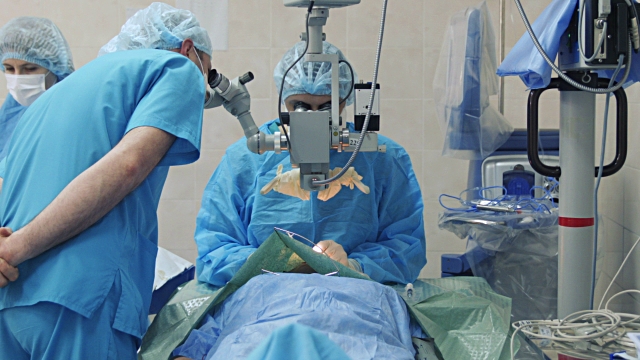MIGS: The New Age of Glaucoma Surgery

The goal of glaucoma surgery is to reduce damage to the optic nerve by lowering the pressure inside the eye. Micro-Invasive Glaucoma Surgery, or MIGS, achieves this using microscopic instruments to make very small incisions in the eye.
Although traditional glaucoma treatments are effective, they are also associated with many risks. As a result, surgeons often delay invasive procedures like trabeculectomy and drainage devices until other less invasive options have been unsuccessful and the patient’s condition is worsening.
“The main theme and priority of MIGS is patient safety,” explains Davinder S. Grover, MD MPH at Glaucoma Associates of Texas and physician partner at Ophthalmology Surgery Center of Dallas. “While no surgery is without risk, MIGS provide improved safety while usually providing mild-to-moderate IOP lowering.”
In the article MIGS: The New Age of Glaucoma Surgery for Glaucoma Research Foundation, Dr. Grover explores how micro-invasive glaucoma surgery is revolutionizing the way surgeons approach surgical glaucoma for patients:
The traditional glaucoma surgeries (trabeculectomy and glaucoma drainage devices), while very effective, are associated with risks such as double vision, devastating eye infections, exposure of a drainage implant, swelling of the cornea, and excessively low IOP. Although these risks are relatively infrequent, they make most surgeons delay glaucoma surgery until all other less invasive treatment options are maximized (medications and laser treatment) and the patient has definitive glaucoma worsening.
Fortunately, the MIGS revolution has allowed us to change our approach to surgical glaucoma for many patients.
(Source: Glaucoma Research Foundation)
 Davinder S. Grover, MD, is an Attending Surgeon and Clinician at the Glaucoma Associates of Texas and surgical partner at Ophthalmology Surgery Center of Dallas, located in Dallas, Texas. He specializes in the medical and surgical management of complex glaucoma as well as cataract surgery.
Davinder S. Grover, MD, is an Attending Surgeon and Clinician at the Glaucoma Associates of Texas and surgical partner at Ophthalmology Surgery Center of Dallas, located in Dallas, Texas. He specializes in the medical and surgical management of complex glaucoma as well as cataract surgery.
